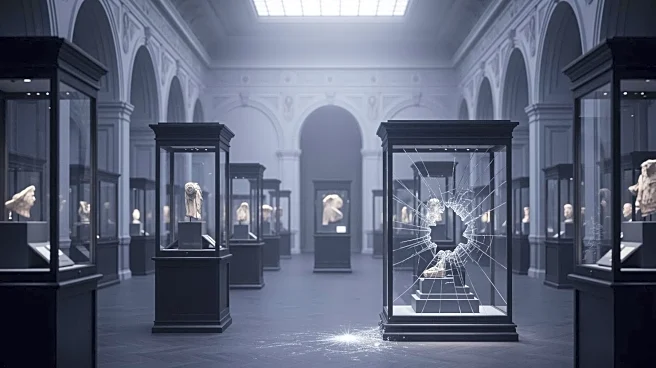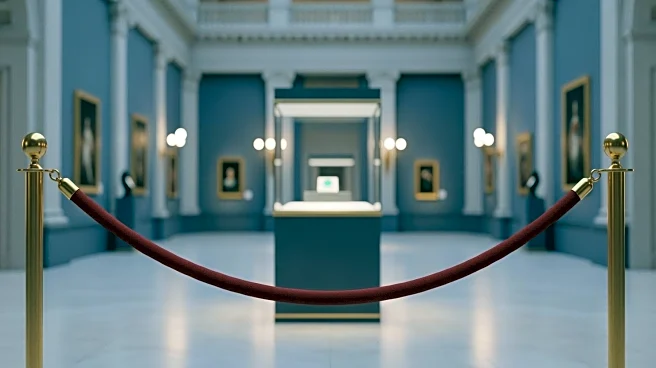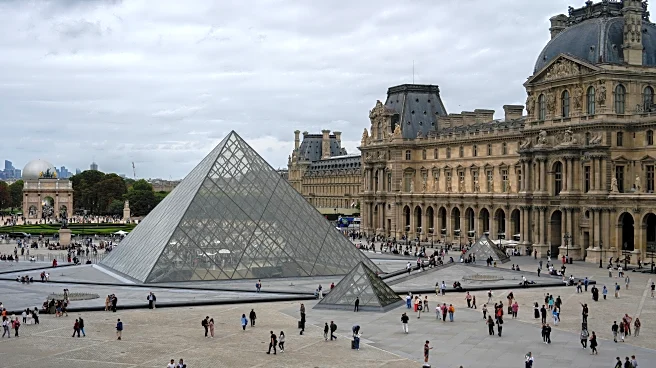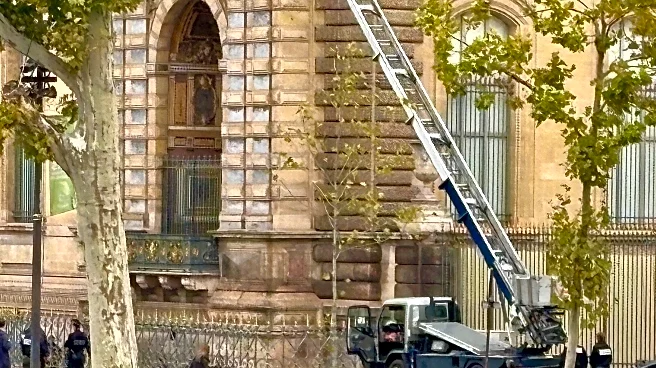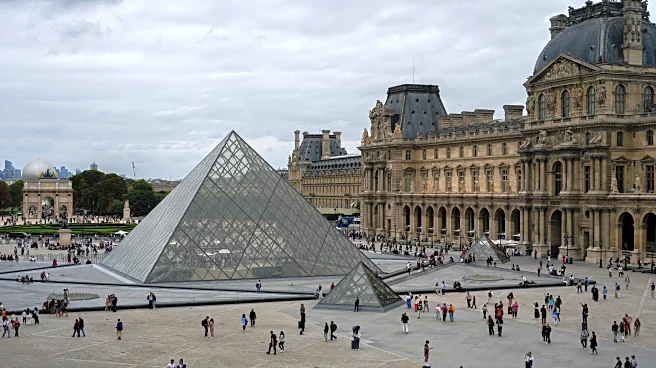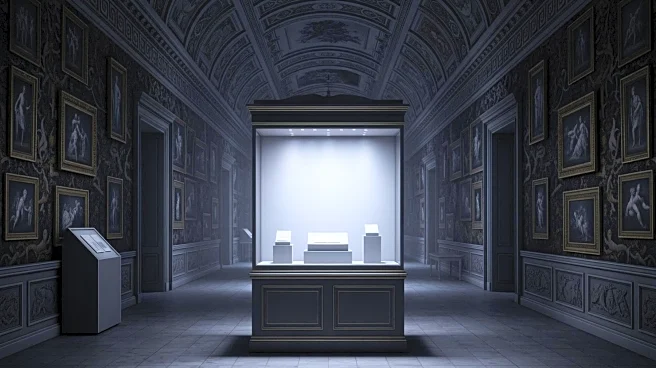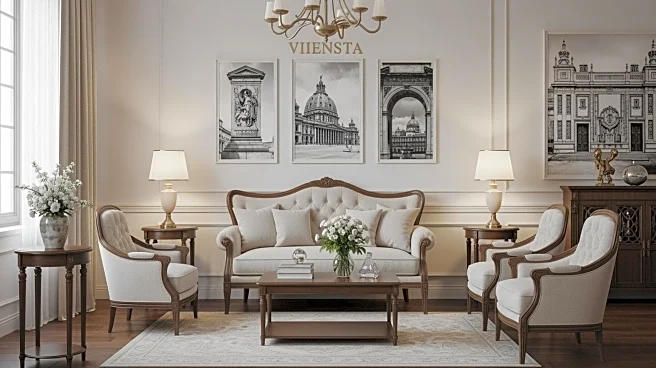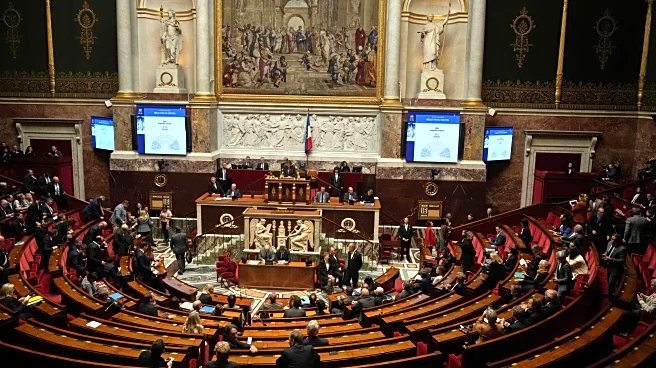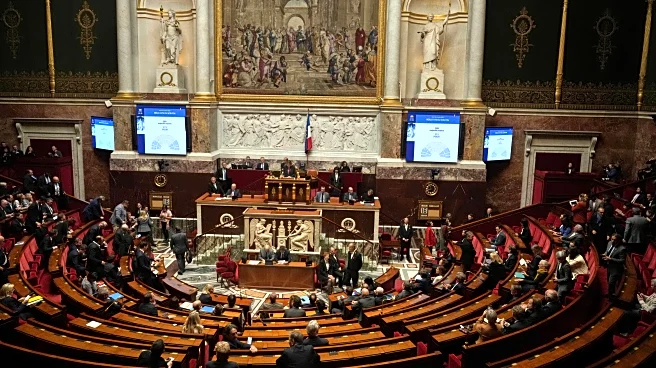What's Happening?
The Louvre Museum in Paris has closed following a significant jewelry theft. Thieves reportedly used a basket lift to enter the museum and stole jewels of immense historical value. The operation lasted
seven minutes, according to France's Interior Minister Laurent Nuñez. The heist targeted the Apollo Gallery, where nine pieces from the jewelry collection of Napoleon and the Empress were taken. One of the stolen jewels, believed to be Empress Eugénie's crown, was found outside the museum, broken. The Louvre, known for its extensive collection of art and historical artifacts, has a history of thefts, including the famous 1911 Mona Lisa theft.
Why It's Important?
The theft at the Louvre Museum is significant due to the historical value of the stolen items, which are part of France's cultural heritage. The incident raises concerns about security measures at one of the world's most visited museums, potentially impacting tourism and public trust. The stolen jewels are irreplaceable, representing a loss to historical scholarship and cultural preservation. The event may prompt museums worldwide to reassess their security protocols to prevent similar occurrences, affecting museum operations and visitor experiences.
What's Next?
The Louvre Museum's closure for 'exceptional reasons' suggests ongoing investigations and security assessments. Authorities are likely to intensify efforts to recover the stolen items and apprehend the perpetrators. The museum may implement enhanced security measures, potentially affecting visitor access and experience. The incident could lead to broader discussions on cultural heritage protection and international cooperation in art crime prevention.
Beyond the Headlines
The theft highlights ethical and legal challenges in protecting cultural heritage. It may spark debates on restitution and the legacy of historical looting, particularly concerning artifacts acquired during the Napoleonic era. The incident underscores the vulnerability of cultural institutions to organized crime, prompting discussions on balancing public access with security needs.
